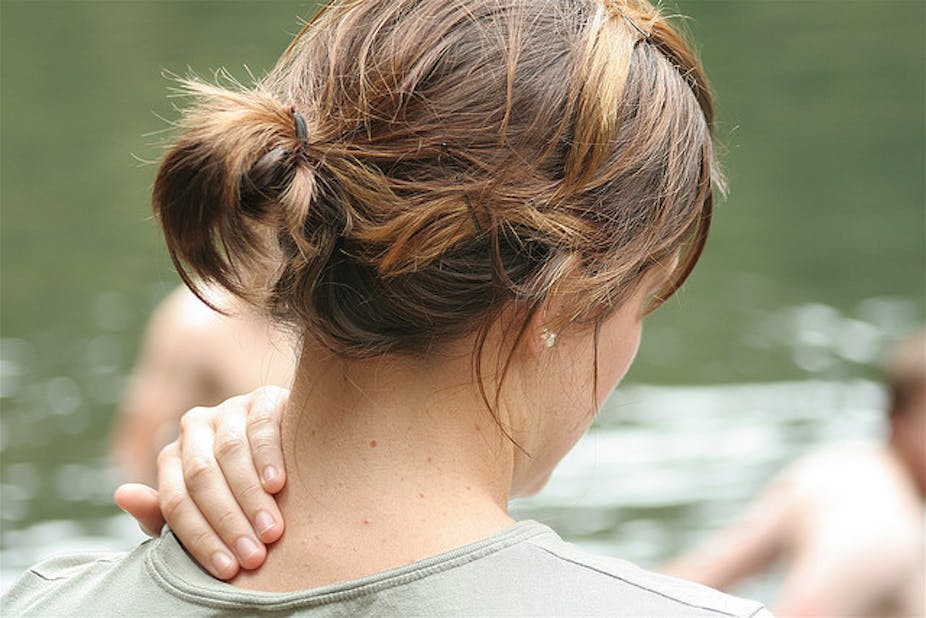It’s difficult enough to counter the massive amount of misleading information provided to consumers through the media and online. But the task becomes much harder when tertiary institutes give an undeserved imprimatur to pseudo disciplines by offering them as courses. Central Queensland University (CQU) is the latest to do so, announcing it will offer a Bachelor of Science degree (Chiropractic) from 2012.
I’m one of thirty-four doctors, scientists and clinical academics who, in an attempt to protect health-care consumers from the dangers associated with unscientific clinical practices, have today written to the science deans at CQU urging them, as fellow academics, to reconsider this decision.
We want the deans to acknowledge the importance of our universities remaining champions of rigorous academic standards and remind them of the primacy of the evidence base for scientific conclusions and health-care practices.
We have no doubt that they will agree with this sentiment. So we can’t help but wonder if they’ve had a chance to look, in depth, at some of the nonsense claims many chiropractors make about the therapeutic benefits they can deliver.
More than just back pain
Some chiropractors limit their clinical activities to treat musculo-skeletal problems that cause back pain. There is evidence that shows these manipulations are marginally effective, though they’re unlikely to deliver lasting results, regardless of whether the practitioners are physiotherapists, osteopaths or chiropractors.

But a practice limited to spinal area musculo-skeletal discomfort is not what modern chiropractic is all about. Most chiropractors believe and teach that spinal area “adjustment” can be used to treat the vast majority of medical problems.
This confidence is based on the theory generated by the founder of chiropractic who claimed that “innate intelligence”, which controls all normal bodily functions, is contained within the spinal column. He equated this phenomenon of “guiding energy” with metaphysical and physiological health. Interference with the flow of this energy, he said, resulted from spinal cord “subluxation” and thus manipulating the spine could restore the flow and correct “95% of all man’s ailments”.
The theory forms the basis for the chiropractors’ peak association’s efforts to constantly broaden the role of chiropractic in primary health care. The Chiropractors Association of Australia’s (CAA) 2009 vision statement encompasses a major ambition: “To achieve a fundamental paradigm shift in healthcare direction where chiropractic is recognised as the most effective and cost efficient health regime of first choice that is readily accessible to all people”.
The 2011 Annual report of the CAA notes, “We are in a unique position to be in the forefront of primary care and the natural leaders in prevention and wellness for Australia. Our intellectual property over the power of subluxation and its impact on health is well understood by the CAA.”
In 2010 the CAA reported, “after ten years of hard slog by the CAA every chiropractor in the country will be permitted under legislation to use the title doctor”. There’s no doubt this was a regrettable decision by the Federal government and confusing to the public. And it’s ironic that these “doctors” constitute the largest “professional” group within the Australian (anti-)Vaccination Network.
Child manipulation
The increasing involvement of chiropractors in establishing paediatric clinics that offer “adjustments” for a wide range of childhood problems is perhaps most disturbing. So it’s concerning that the new head of chiropractic studies at CQU endorsed the move to establish such clinics when he was at RMIT.

Chiropractic paediatric websites claim that “adjustment” can help many potentially serious childhood conditions including, fever, colic, croup, allergies, wheezing, poor posture, stomachache, hearing loss, headaches, asthma, bedwetting, bronchitis, learning disorders, arthritis and attention deficit hyperactivity disorder, among other things.
This five-minute video demonstrating adjustment techniques for adults and children shows just how risky the technique can be. And the literature contains details of more than 700 cases of serious complications following “adjustment”.
The broader problem
My fellow clinicians, academics and scientists and I conclude our letter to the deans of CQU by emphasising that, “[Y]our chiropractic students may well be exposed to excellent courses in anatomy and some basic sciences. However the inclusion of subluxation theory as evidence-based reality is unacceptable and will damage your reputation for academic leadership.”
It’s important to note that while CQU’s announcement prompted our latest response we are in no way singling out CQU for criticism; our comments apply to all tertiary institutions that are involved in legitimising anti-science. Currently three universities offer chiropractic studies while fourteen universities offer non-evidence based courses. RMIT’s “Energy Medicine” is just one.
Should university-based chiropractic education be restricted to evidence-based techniques? Have your say below

